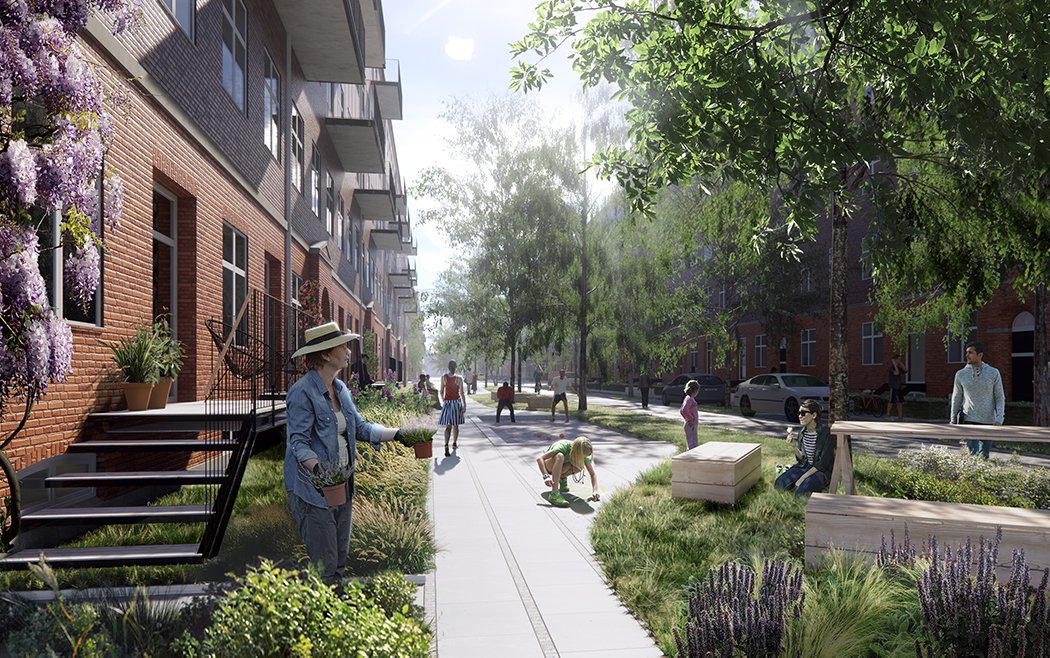Is Copenhagen going car free?
An interview with JAJA Architects
Through an unassuming doorway and up three flights of stairs in Nørrebro, JAJA Architects can be found in an open-plan studio looking out upon Superkilen Park. Like many architecture studios, JAJA’s is filled with project blueprints, building models, and the buzz of people who care about their work. Yet this is an architecture firm with a difference.
Head of Mobility, Robert Martin, sits down with me to explain why.
“Our work at JAJA is defined by three sustainability pillars: biomaterials, transformation, and mobility.”
As Robert explains, the focus on biomaterials ensures projects are made from environmentally-friendly, aesthetically-pleasing materials from the outset; transformation ensures that existing infrastructure and spaces are stretched to their best potential; and mobility ensures that people can move around and stay connected in easy, convenient ways. Above all, the theme of sustainability is hard to miss – it is the force that drives JAJA, and often sees the team self-starting their own projects, and lobbying the local authorities for support as they go.
As Head of Mobility, Robert truly embodies this entrepreneurial spirit. Having trained as an architect in Sydney, he came to Danish shores eight years ago on a three-month contract – and has stayed in Copenhagen ever since. The pioneering nature of JAJA’s work in mobility has kept him tethered.
“It started when everyone was getting excited about self-driving, autonomous cars. For a number of reasons that was interesting to architects – the possibility of the vehicles driving closer together, reducing the amount of on-street parking, and people sharing rides, meant we could start thinking about reclaiming the abundance of space given to cars.”
While autonomous cars haven’t taken off in quite the way the world expected them to five years ago, their possibilities started an important conversation at JAJA. “Just because cars aren’t autonomous, it doesn’t mean we can’t reduce the impact that they have on our cities. We decided to explore that idea in an industrial PhD, which looks into shared transport and space.”
Informing JAJA’s landmark ‘Copenhagen Car Free(dom)’ project, Robert’s research has helped to construct a business case for shared mobility in the city of Copenhagen. The research found that:
only around a third of inner-city households currently own a car
of these, only 10% of car trips are used for commuting to work
around a quarter of cars in inner-city Copenhagen do not move between Monday and Friday
The statistics are revealing: most inner-city residents do not regularly use a car.
For the occasional weekend trip to visit relatives or the countryside, car-share options seem to make more sense than car ownership. However, encouraging this change among residents is not so straight-forward. As the average income in Copenhagen has risen over the past 20 years, so too has car ownership. Residents are attached to their cars, and until they can feel confident that car-share options will be locally available, reliable, safe and easy – car-sharing is a hard sell. For this, as Robert says, government investment and support will be essential.
JAJA’s Car Free(dom) project goes far beyond reducing private car ownership, however. Robert’s team are also hard at work exploring ways in which newly freed-up space on the roads can be used by the public. For this, piloting and ‘back-casting’ the different options are a central part of the team’s methodology.
“Instead of forecasting, where ideas on the future are based on historical data, we start with a vision of the city we want, and work backwards through the steps we need to take to get there. An important part of that process is to prototype these ideas in a step-by-step process, to make sure they actually work for the residents. Encouraging children to play in the streets and increasing city nature might seem like a great idea in theory, but we want to confirm this assumption and build up stakeholder support before we try to implement it at scale.”
The final task of the Car Free(dom) project is to address alternative methods of transport beyond car travel. For this, Copenhagen is already very well-placed: it is a famously cyclable city, with the Metro system offering fast links across districts. In JAJA’s ‘mobility pyramid’, the most emphasis is placed on travel that supports both health and the environment.
“The healthy body and healthy city go hand-in-hand. One of the great things about getting a city cycling is that you have a fitter population, simply through passive exercise.”
Copenhagen is certainly a city that cycles – and thanks to its clean harbours, it is also a city that swims, sails, rows and paddles.
As Robert and his team begin to plot a future for Copenhagen in which fewer cars and more space can combine with greater connectivity, their challenge is as much in gathering support now as it is in imagining the future. Indeed, much of Robert’s work in mobility relies on support from the Danish government – and garnering this buy-in is a large part of Robert’s day-to-day.
Yet this is a place in which the Danish government is heavily investing in development, transformation, and crucially, a carbon-neutral future. It is also a country in which residents truly take the lead from their government. As Robert assures me, a lot of hard work is required to envisage, plan and gain support for a car-free future in Copenhagen – but there is every reason to be optimistic.






